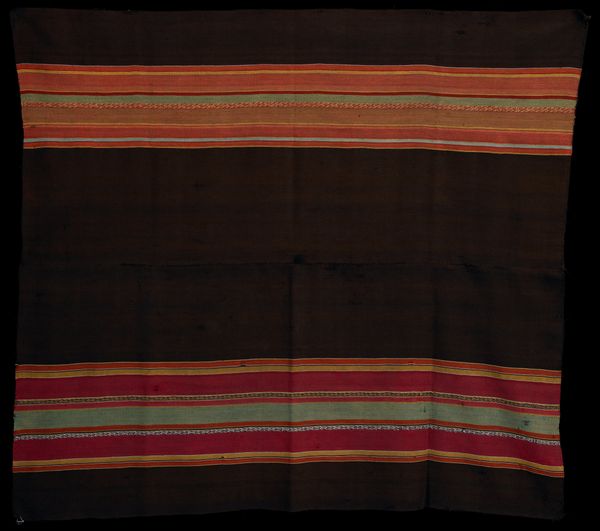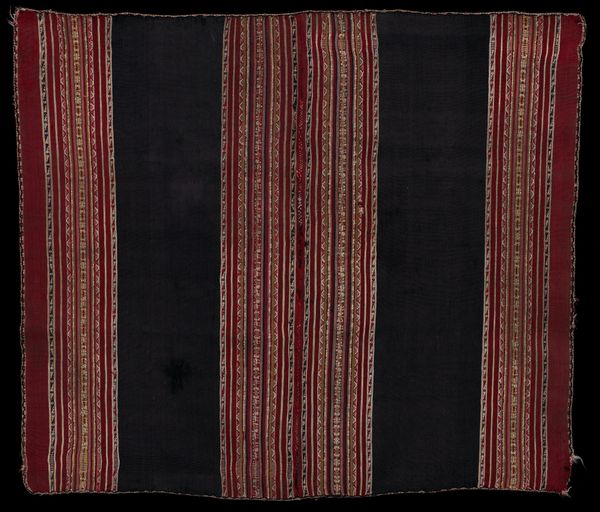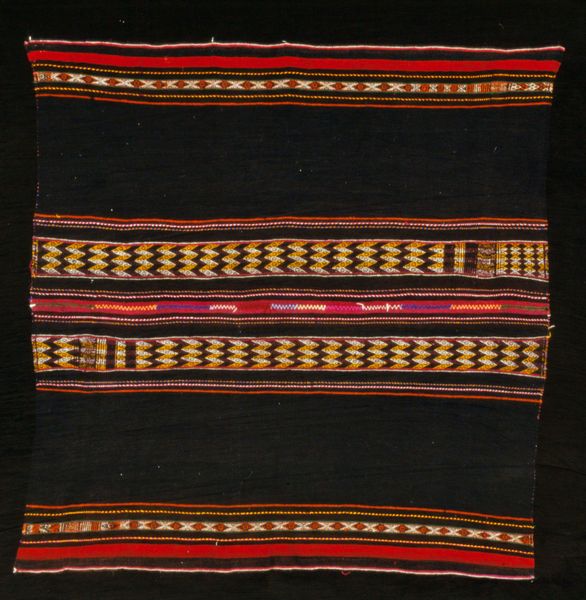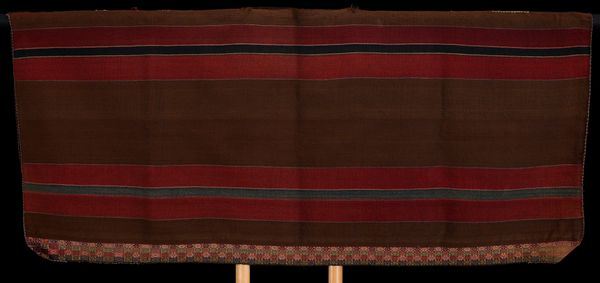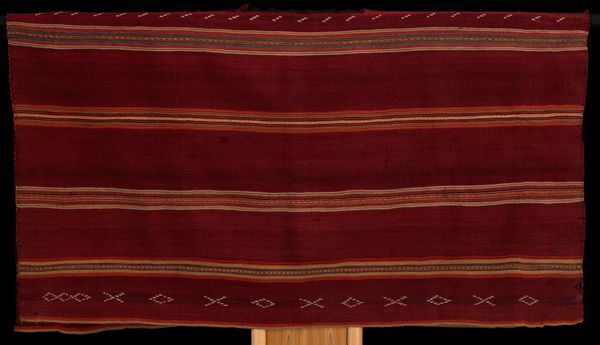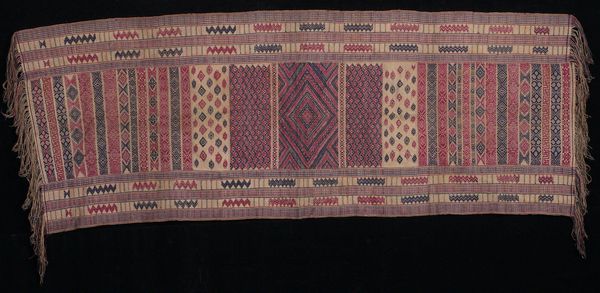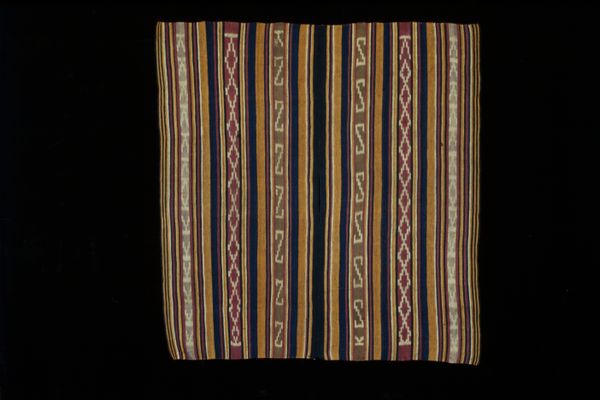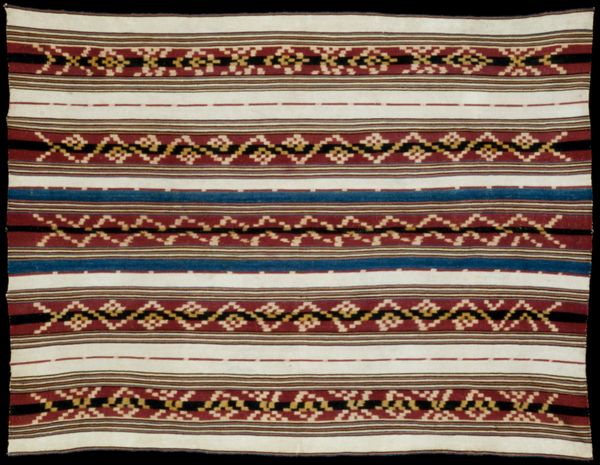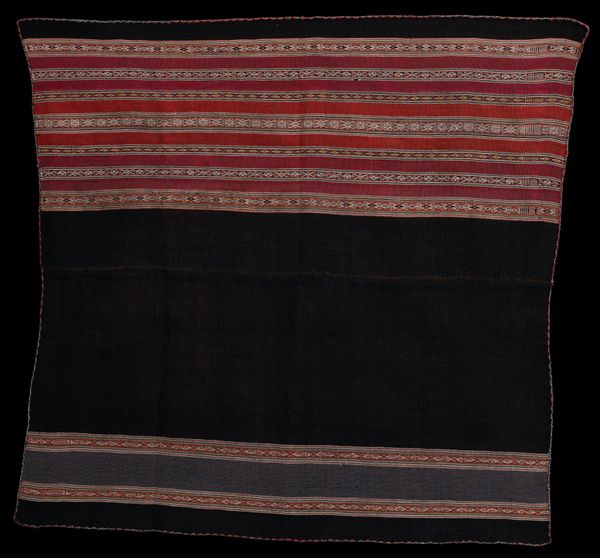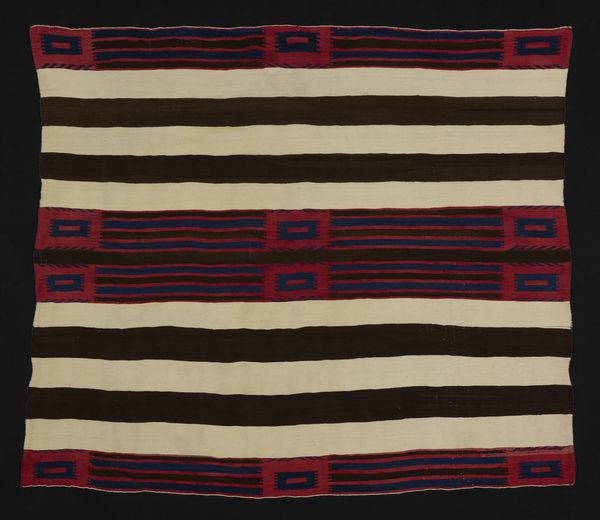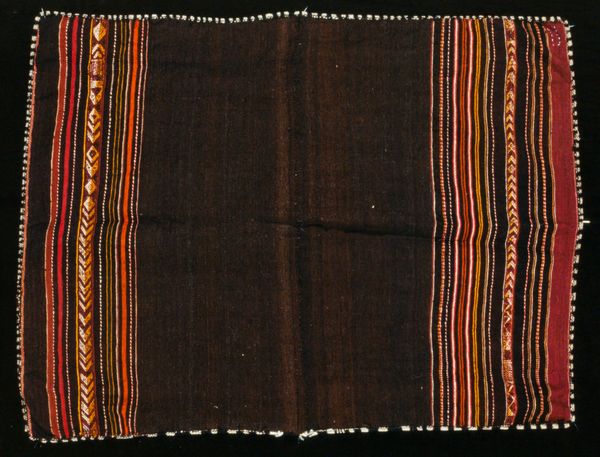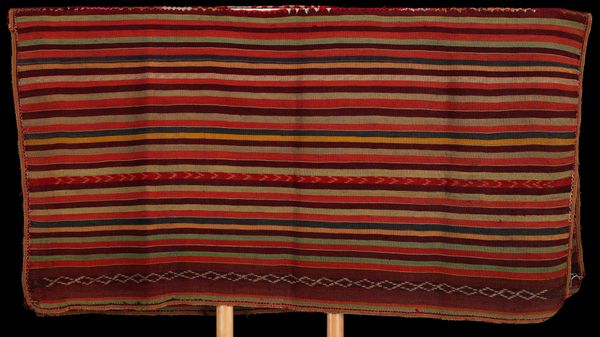
fibre-art, weaving, textile
#
pattern heavy
#
fibre-art
#
weaving
#
textile
#
geometric pattern
#
repetitive shape and pattern
#
geometric
#
repetition of pattern
#
regular pattern
#
pattern repetition
#
textile design
#
layered pattern
#
funky pattern
#
repetitive pattern
#
indigenous-americas
Dimensions: 40 7/16 x 31 3/4 in. (102.71 x 80.65 cm)
Copyright: Public Domain
Curator: The artwork before us, housed here at the Minneapolis Institute of Art, is an Aymara woman’s ceremonial awayo, a mantle dating back to the 19th century. Editor: My immediate reaction is a somber, almost majestic simplicity. The dark expanse is punctuated by these vibrant, horizontal lines – like whispers of celebration across a dark landscape. Curator: It's remarkable how this single textile speaks to both the everyday and the ceremonial. We need to remember the hands that created it, the labor involved in the spinning, dyeing, and weaving of the wool. These were valuable commodities and this mantle was clearly crafted with care. Editor: Absolutely, and from a formal perspective, consider the composition. The strong horizontal bands create a sense of grounding, stability, while the smaller, patterned stripes inject visual interest, a subtle kind of rhythm. The colours—earthy reds, golds—speak to the landscape. Curator: The materials are intrinsic to its meaning. Aymara textiles are deeply connected to their social structures, rituals, and economic systems. The specific dyes used, perhaps derived from plants and minerals, reflect available resources and trade networks. Each pattern woven carries encoded meanings known to the community. Editor: It's fascinating how the geometric designs serve a dual purpose – purely aesthetic, and symbolically rich. The regularity of the pattern suggests order, while the slight variations within each band add an element of the unpredictable, the human. Curator: Think of the woman who wore this. An awayo like this was far more than simple adornment, it’s integral to their identity, it signals marital status and place within their community. Editor: So true, it acts almost like a codified language of the culture through its aesthetic presentation, offering a look into their shared belief systems, traditions. What I appreciate, though, is its quiet strength – a visually potent statement, even for someone completely unfamiliar with Aymara traditions. Curator: Studying the awayo allows us to appreciate not just the final object, but the process, the materials, and the lived experiences embedded within it. Editor: Yes, and to see that through its formal properties—texture, color, line, the relationships between these things— the artist manages to transcend the specificity of its origins.
Comments
No comments
Be the first to comment and join the conversation on the ultimate creative platform.
